The New Gastronome
Va’ Sentiero
Of Mountain Trails, Communities and Food
by Matteo Doveri
by Matteo Doveri
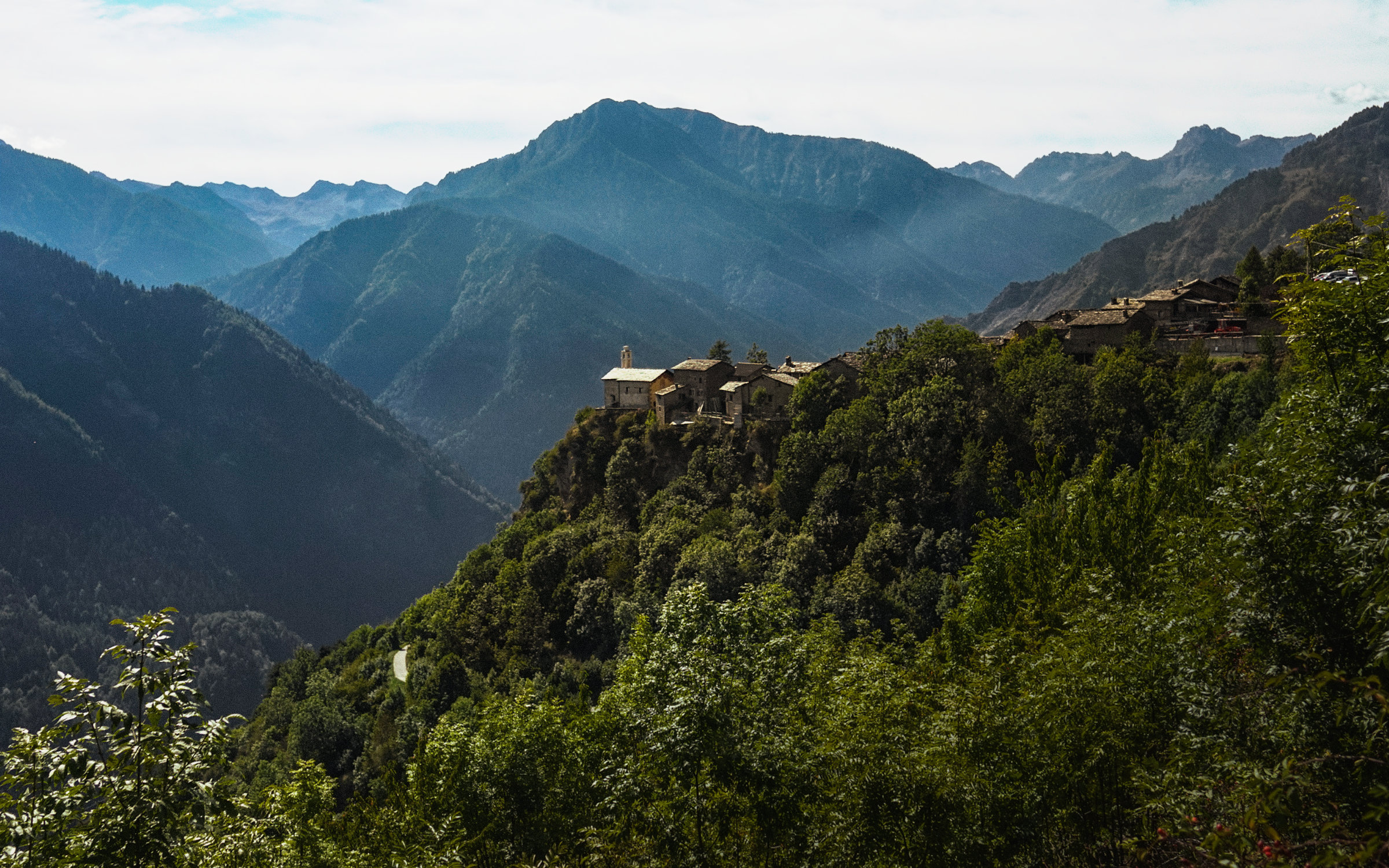
In May 2019, a madcap crew of guys and girls started walking along the Italian mountains, following the Sentiero Italia – the longest hiking trail in the world! – to discover a less famous part of their country.
When we think of Italy, usually we imagine a sunny country by the seaside, but, in reality, about 70% of Italy is composed of mountains. Reason enough for the team of Va’ Sentiero to showcase the mountains’ current situation by walking them. Both the Alps and Apennines emptied during the 20th century, as people decided to move to the more productive valleys and cities, leaving their former homes abandoned. However, Va’ Sentiero has discovered that a slow reverse process has started: more and more people are returning to the mountains to find a new way of living. A revolutionary process, often powered by food.
The Va’ Sentiero project was born in 2017 when Yuri Basilicò met two Norwegian guys while lost on the Gr20 (Corsica’s Hike). Though they were lost as well – all had found themselves following the sound of a donkey -, they told him about the Sentiero Italia, a long hiking trail that crosses the whole country via the mountains. Yuri, an avid walker, started researching it immediately: it was tracked in the ’80s and had only ever been walked in its entirety a few times. Even if CNN had put it on its ‘Ten Best Hikes of the World’ list, there was hardly any information about it. So, together with Giacomo Riccobono and Sara Furlanetto, Yuri started to think about a new adventure: What if they walked along all of it?
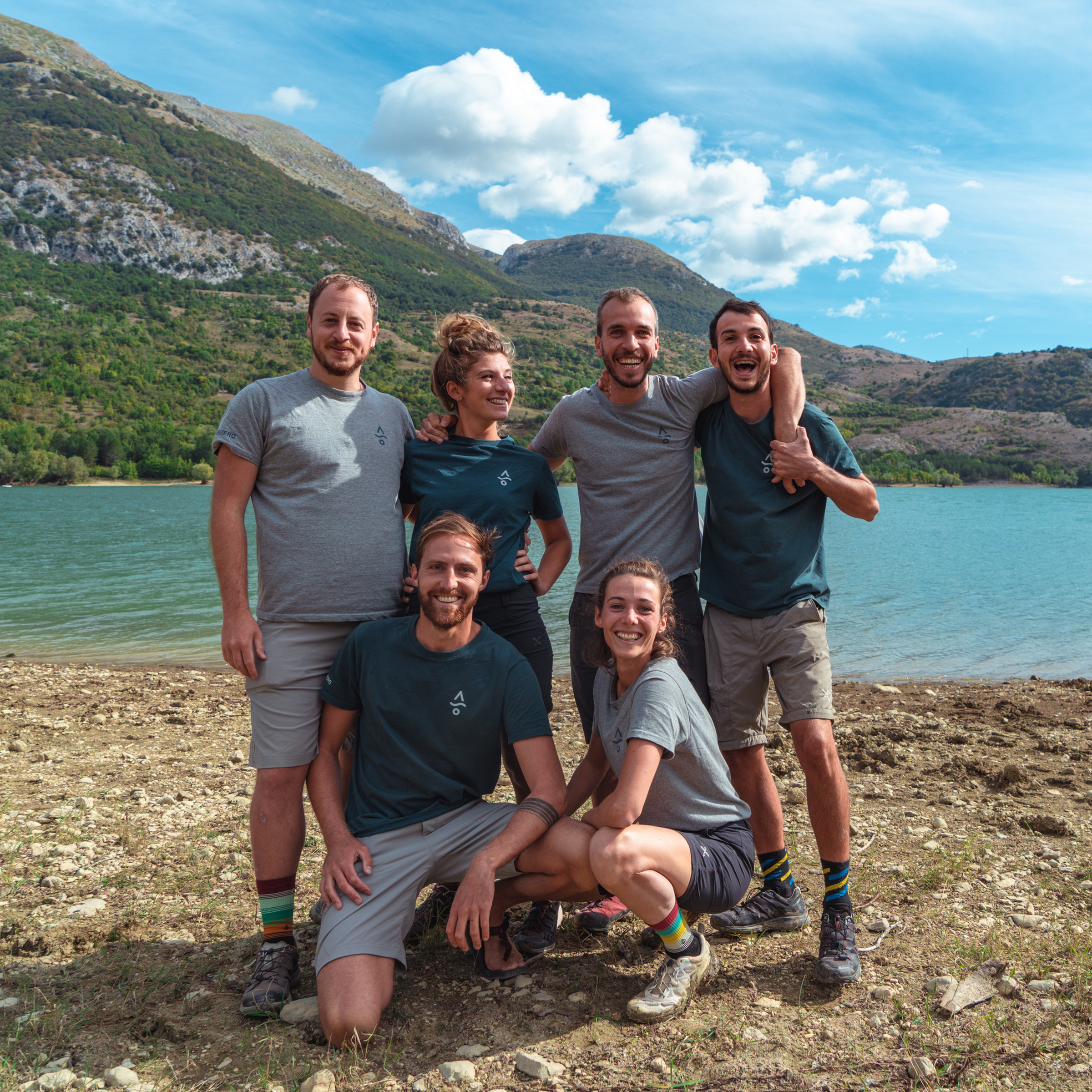
Va’ Sentiero Team
What started as an impulsive dream slowly became a project. As they could find so little information on the trail, the trio decided to change their objective: it wouldn’t simply be an adventure; it would also become a communication project, as a treasure like that needed to be known! The team grew with the videomaker Andrea Buonopane and the philosopher-cook Francesco Sabatini. And so, after a successful crowdfunding campaign, which showed the true potential of the project, Va’ Sentiero started its journey on the 1st of May 2019 from Muggia, a tiny village by the Trieste bay on the border with Slovenia.
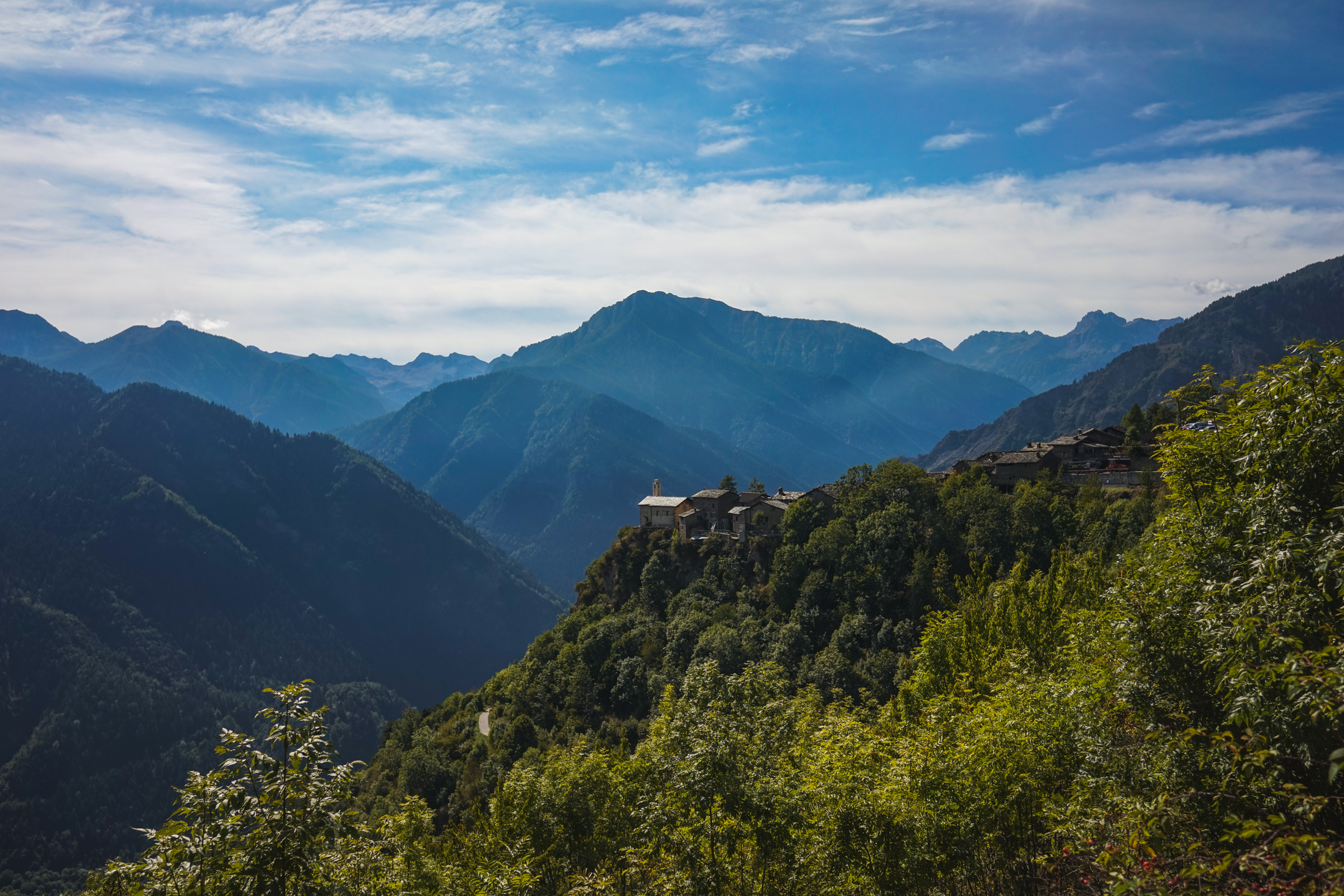
Val Maira
While discovering a new side of their country, the team realised how much food and gastronomy were linked to identity. From the beginning of time, recipes have spoken about the history of nations, and products have told from the landscape they have come from. On the Carso Triestino, the identity process happens through osmize. Osmiza is a special kind of tavern, the word originating from the Slovenian osmica meaning “eight”. Eight was the number of days in which wine producers could sell their wine and other homemade products tax-free during the Habsburg Empire. This ancient tradition has been transmitted until today, and wine producers can still sell their products directly for sixty days with reduced taxes. When you see an ivy branch placed on the side of the road, all around Trieste, stop right there because it means that there is an open osmiza nearby.
“From the beginning of time, recipes have spoken about the history of nations, and products have told from the landscape they have come from.”
On their journey, the team visited the osmiza Fabec in Malchina, managed by Franc Fabec and his brother Tomaš. After his PhD in history, Franc chose to return to his birthplace and continue this old tradition. The osmiza is not only a temporary wine shop but an essential place for Slovenian culture.
Malchina is on the border with Slovenia, a border that changed many times during the twentieth century. Franc expresses his desire to talk about his history and identity through his osmiza, where guests can find all writings in both Italian and Slovenian. Franc has a Slovenian soul, a Slovenian belonging, but he was born in Italy: he is a Slovenian-Italian. That complex situation is difficult to understand from the school benches. Still, when you come to an osmiza, you can taste the difference in the cooked pork ham with its Mittel European flavour or in the strong and pure red wine, the Terranom, which is a perfect summary of Slovenian people. In his osmiza, Franc has found the best way to teach history.
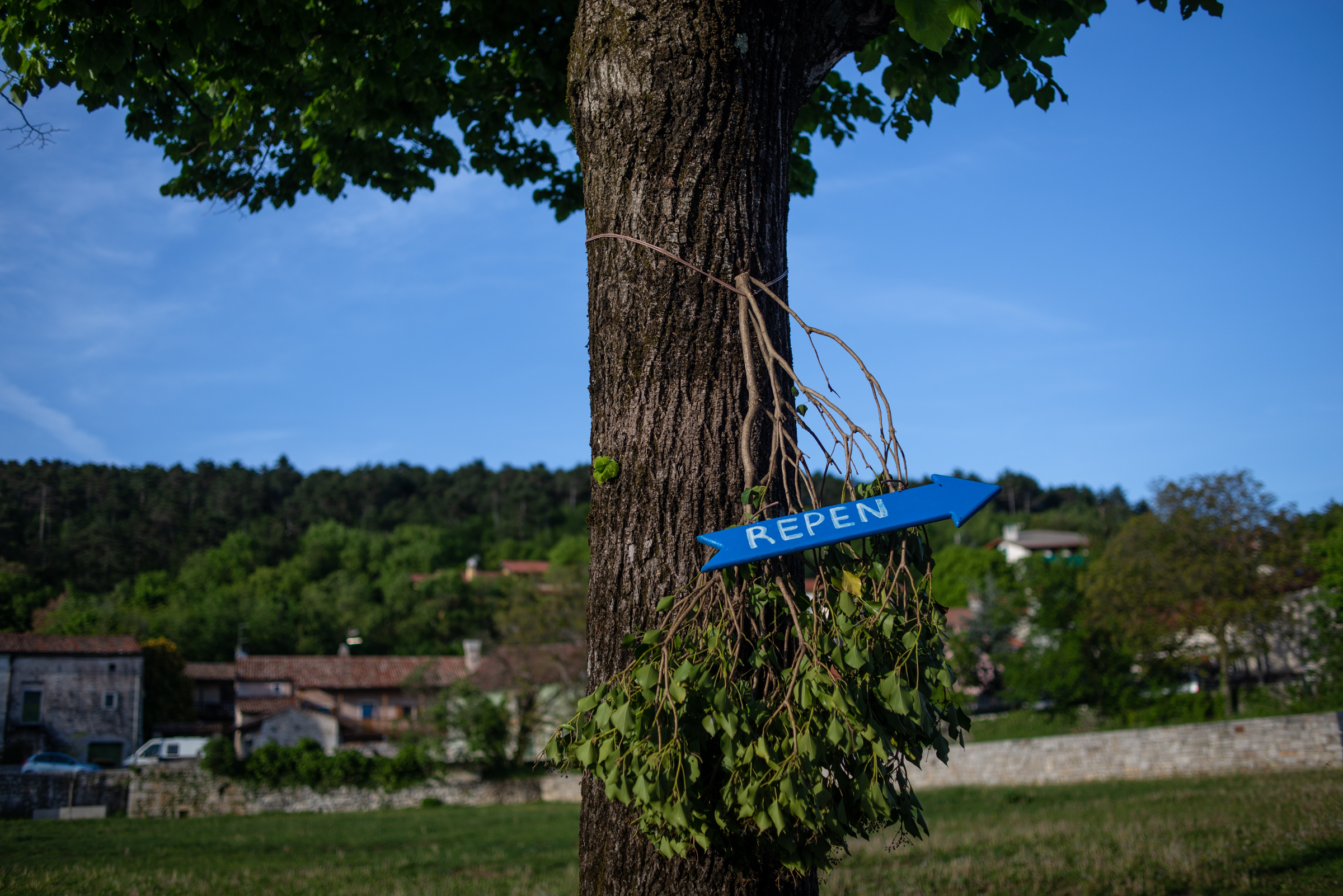
Ivy branch to signify the Osmiza
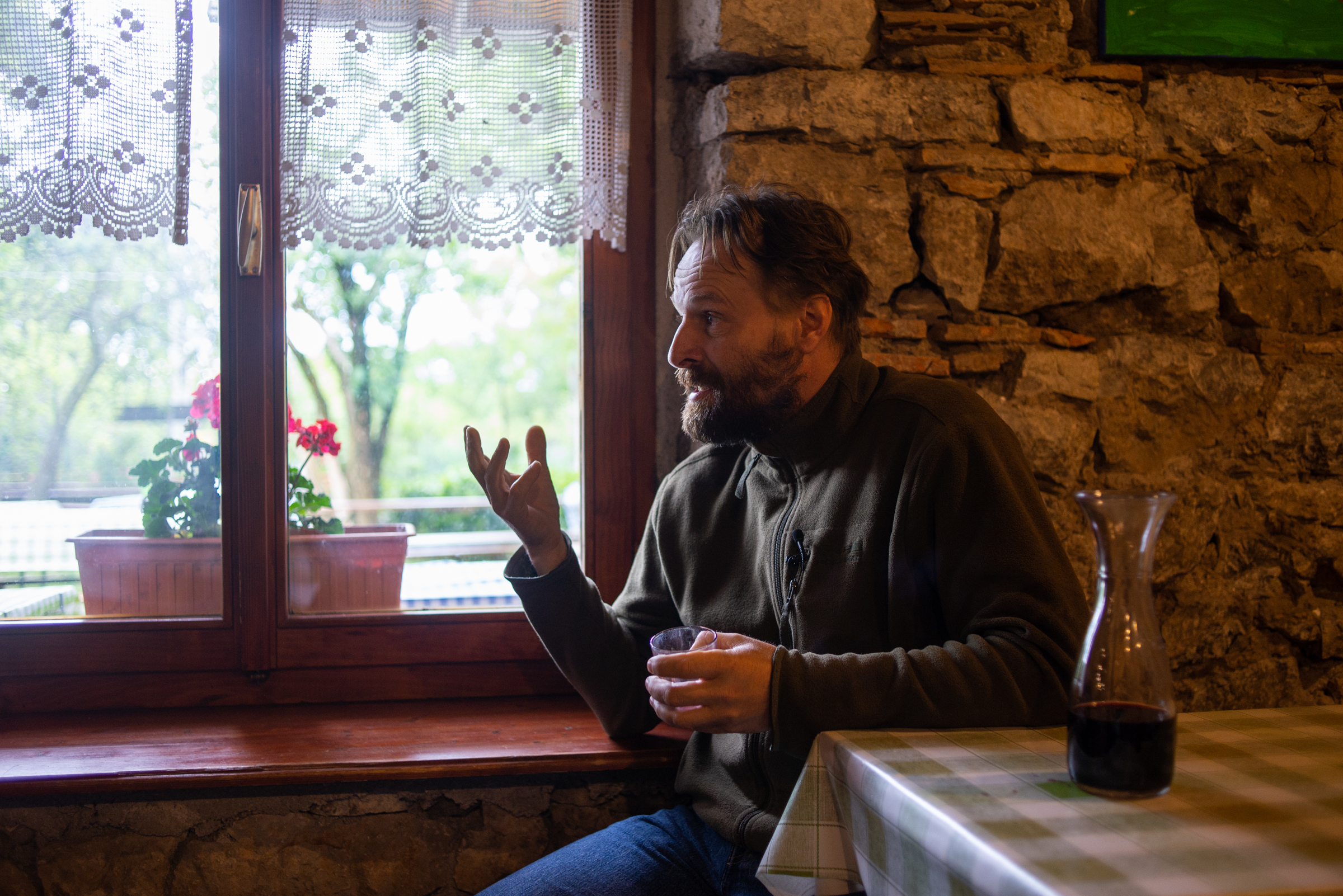
Franc Fabec
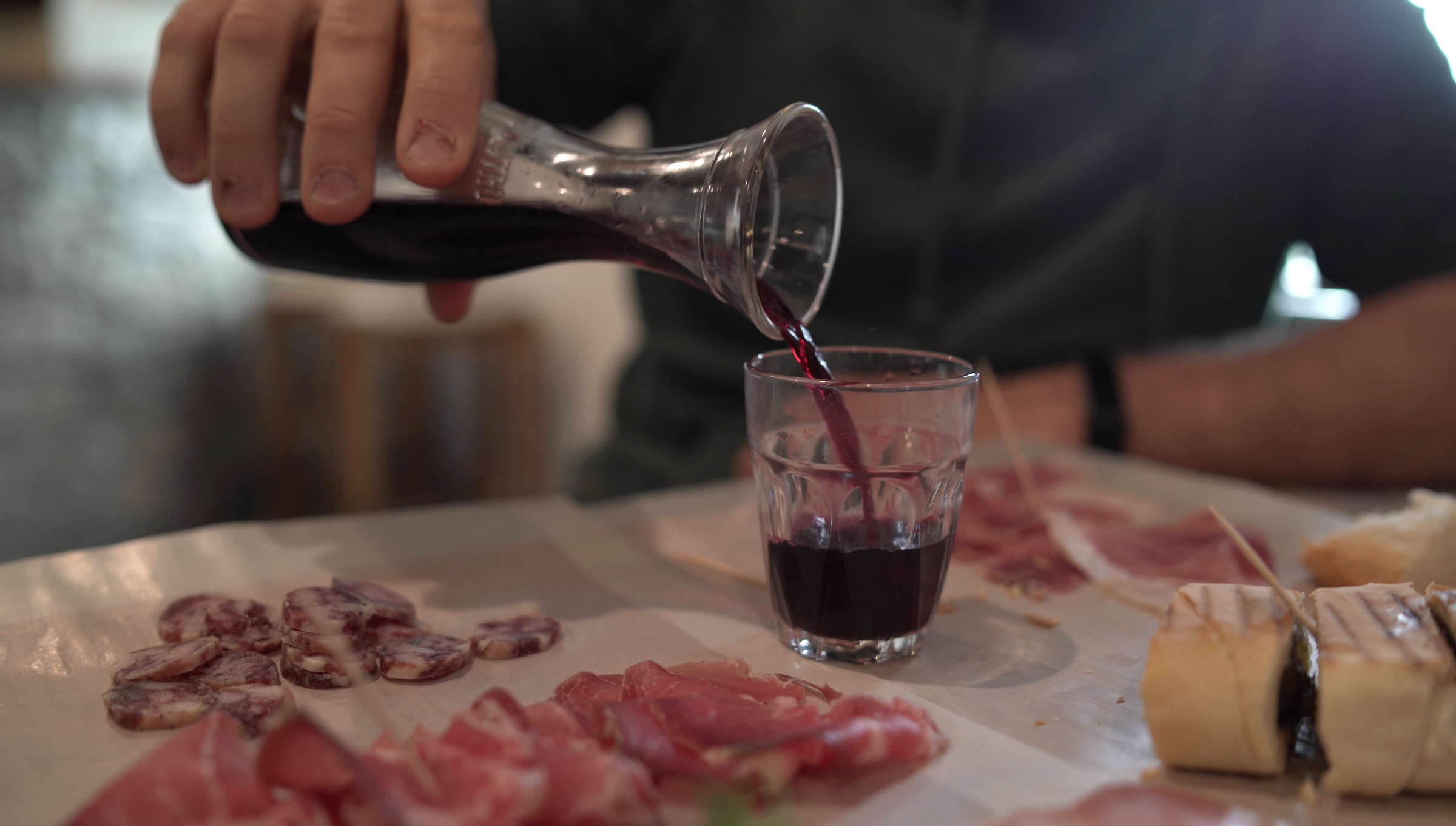
Osmiza Fabec
On the other side of the Alps, in Piemonte’s mountains, the reinhabitation process is particularly lively. Mountains and valleys in the provinces of Torino and Cuneo are arranged like books on a shelf; every ridge has a different story. Proximity to the city has allowed a continuous exchange of energies and ideas, as more and more young people chose to start farming, make cheese, open restaurants, or even make beer.
In Melle, a little village in Val Varaita, Fabio Ferrua and Enrico Ponza decided to go back to their mountains after spending many years in Turin and started to produce beer. They began with a little stand in 2012, which only opened on weekends but outgrew the format quickly and opened the restaurant Birrificio Antagonisti. Today, the Antagonisti team comprises more than ten young people who live in Melle, a village that counts only two hundred inhabitants in total!
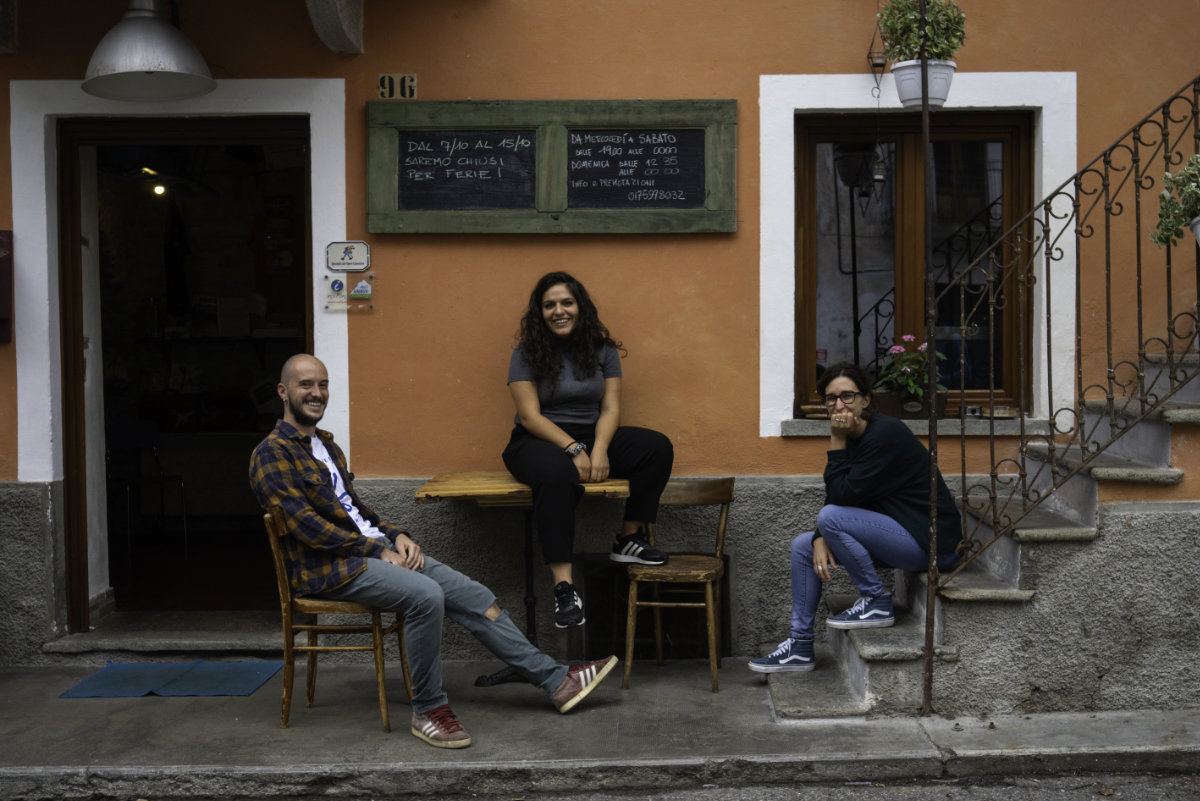
Antagonisti Team
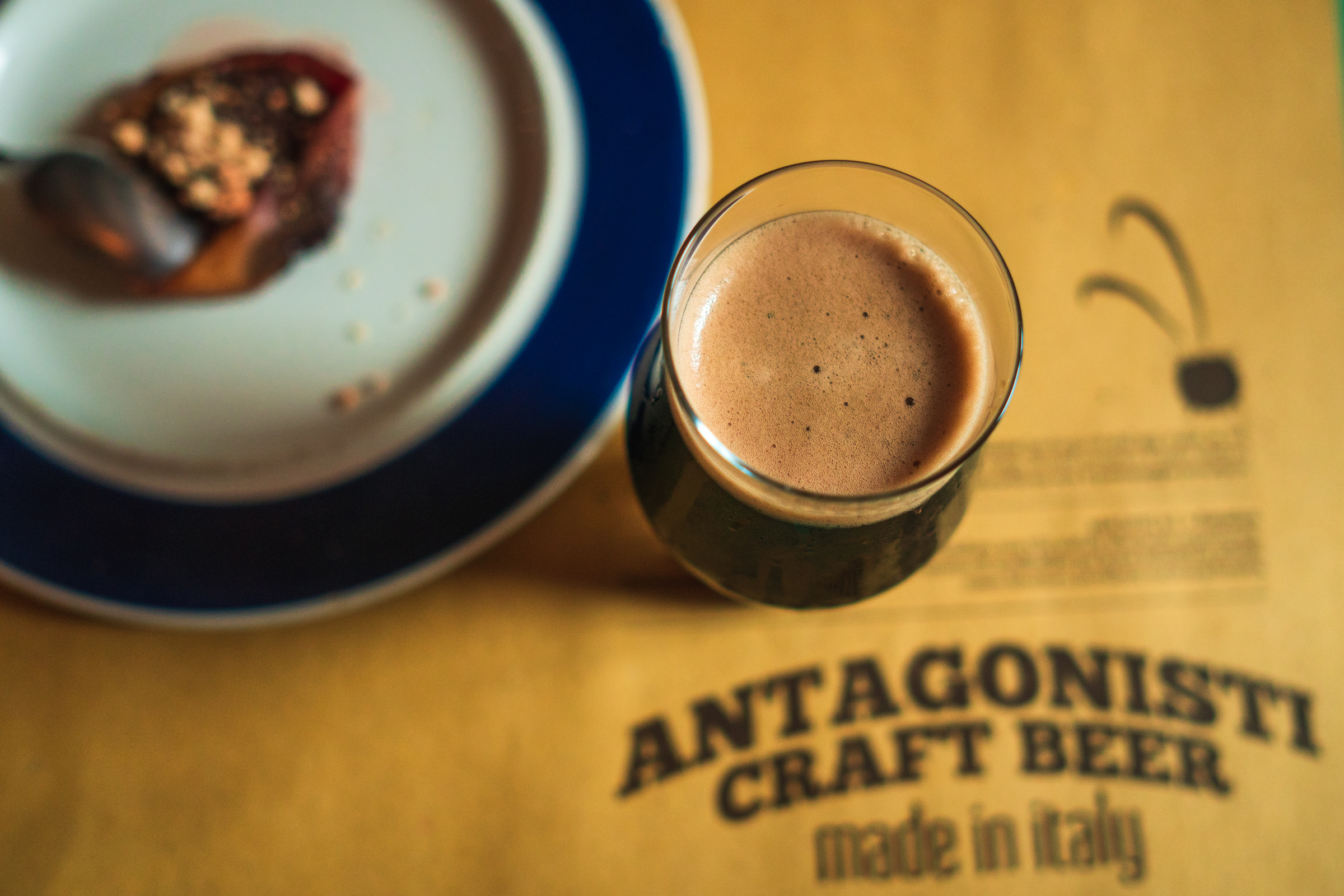
Antagonisti Craft Beer
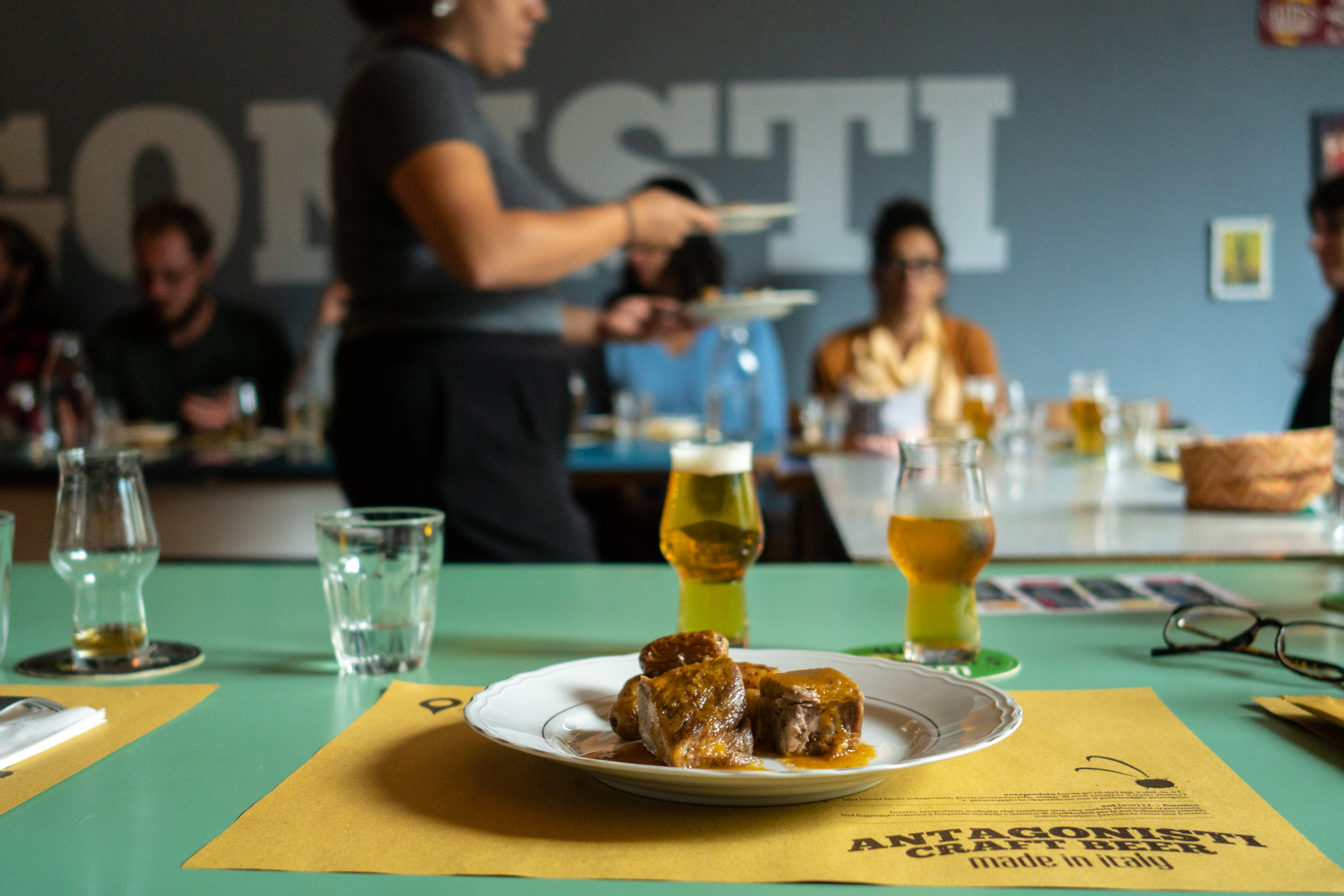
Antagonisti Craft Beer
From the very beginning, Fabio and Enrico understood the necessity of building a strong network in their valley. The arrival of Yuri Chiotti – the starred chef behind Reis, a mountain restaurant – has been the spark to start many new projects. They created Fioca, an ice cream parlour, and Cresco, a farming project that wants to bring a renovated view to the old agricultural mountain scene: biodiverse, healthy and right. Together, all these projects create a system of entrepreneurship that allows people to live and sustain themselves in the small village on the mountains. This action also stimulated the territory to revalue itself. One of their goals has already been achieved: preserving the Slow Food Presidio of Tomino di Melle. This raw milk cheese had been in danger of disappearing, as only a few older people produced it. Today, trends are positive, and youngsters, like the team of Azienda Agricola Roggero, have decided to continue the ancient tradition.
On their journey through the Alps, Va’ Sentiero was followed by Giovanni Tieppo, a seventy-year-young man who chose to join the team to achieve his dream: to complete the Sentiero Italia that he started to walk in the ’90s. Giovanni drives an old van with all the team’s equipment.
“They started to take care of the near woodland that is becoming a nature reserve, as mountains need constant care and coming back to live in the means being interdependent with your proximate environment.”
After seven months of uninterrupted journey, the expedition stopped in Visso – a little village shook by an earthquake in 2016 – at the foothills of Monti Sibillini in the centre of Italy. They wanted to complete the second part of Sentiero Italia in 2020, but since the Covid Pandemic has disrupted the plan, the team could restart their journey only in August, when they covered the ground from Marche to Puglia in a two-month hike.
Choosing to walk through these highlands is an adventure, but choosing to live there is often challenging. In Pieia, a little village in the centre of the Apennines, a group of friends decided to start a new community on an abandoned hamlet: Caimercati. The idea of reviving these places has led to a different vision of society and the goal to valorise the abandoned Apennines. But, after some years, they had to realise that an idea alone cannot change the situation, and many families left.
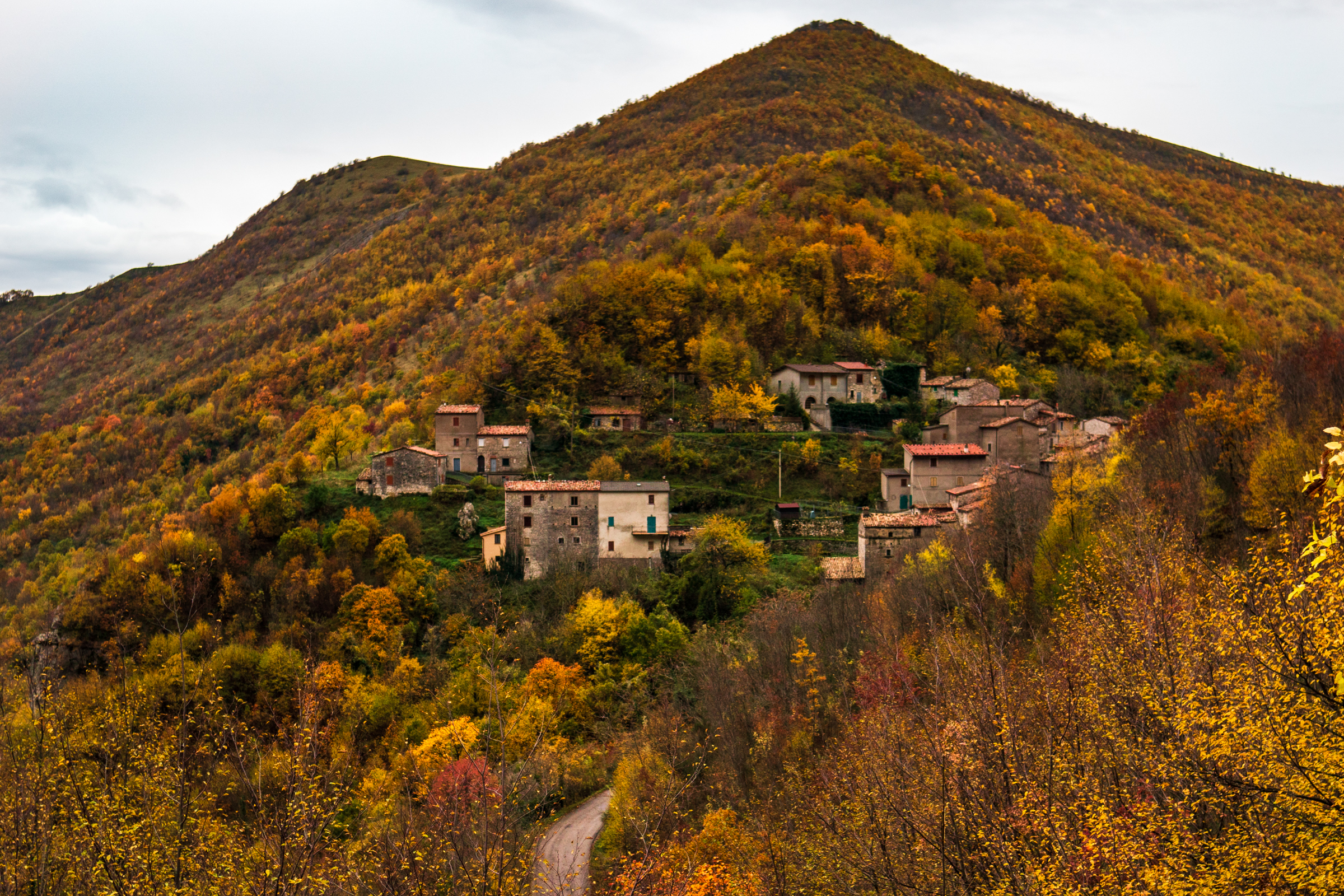
Pieia, Appenines
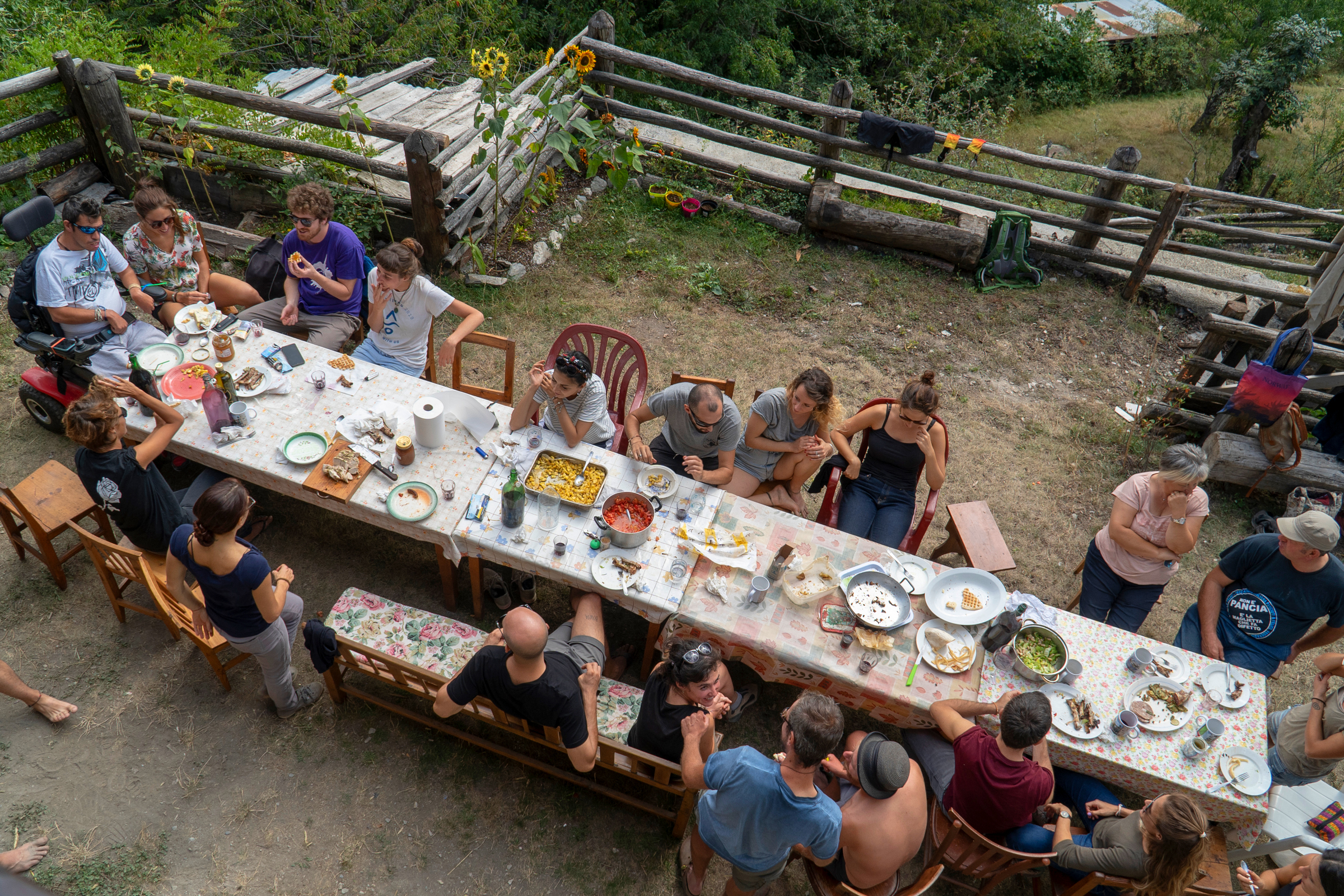
Lunch Time
Cristian Gualtieri was one of the original members of the Caimercati community that decided to find his place on the Marche’s mountains after travelling around the world. He started to work in agriculture as a farmhand, then got more and more interested and started cultivating spelt. With a lucky strike, he began to sell his spelt to Japan. And so, his farm Azienda Agricola Caimercati started to grow and helped him to realise his dream: “I want a home and land to live in”. A common and simple dream that was possible thanks to food; consequently, people started to arrive again. Giada J Todisco Grande and Gregorio Lombardi, a young couple with two children, raise pigs and half-wild boars in their farm G. Brigantes and sell their products in neighbouring areas. They started to take care of the near woodland that is becoming a nature reserve, as mountains need constant care and coming back to live in the means being interdependent with your proximate environment. In the woods of Pieia, very close to Acqualagna, an area famous for its white truffle, Nicola Favina – a guy from Brescia – manages to live by hunting truffles. Through gastronomy, ideas can meet up with concreteness, touching the territory’s potentiality and difficulty – one of the goals of the Caimercati community.
A. D V. E. R. T. I. S. I. N. G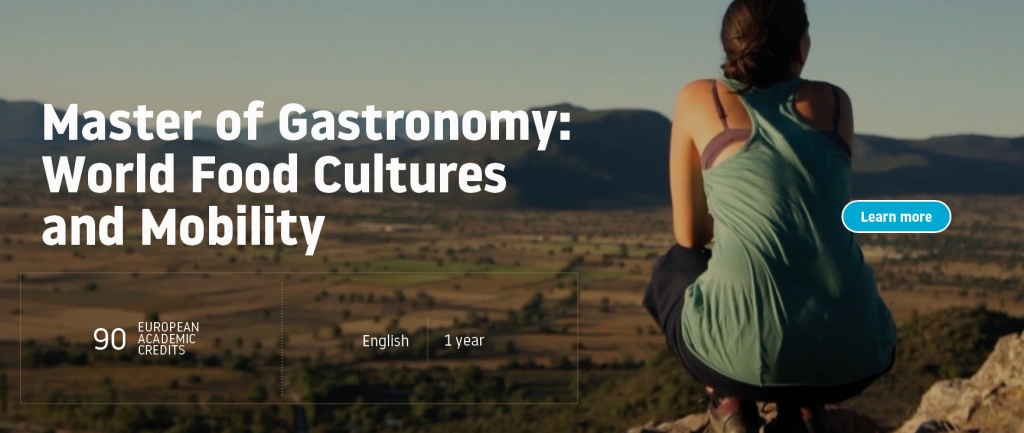
On this second part of the expedition, the team grew with the arrival of Martina Stanga as social media manager. Martina met Va’ Sentiero on the road, and as one of the team’s slogans is indeed “walk with us”, she was welcomed with open arms. Va’ Sentiero is a collective experience because the first step to making the Sentiero Italia known to the public was to bring people to walk on it. In the first seven months of trekking, hundreds and hundreds of people joined the team for a few days or more. It was like a huge caravan that brought light to the Italian mountains.
“The mountains are taking back their important role in the future of Italy, where every valley has its tradition, every valley has its potential, every valley can be a personal paradise. All the world is welcome; just bring your story.”
This year, Va’ Sentiero will complete the last part of this enormous path through the southwest of Italy and the islands. Along the journey, the team was able to get a rare view on the other side of Italy, beautiful and empty places waiting to express their potential. In the last few years, more and more people felt the desire to live their lives differently. Mountains are the perfect laboratory to experiment with a different approach. It is not the first time that this process has taken place, as already in the last decades, the choice to go to live in the mountains was linked to the idea of counterculture: a throwback to a nostalgic past with a strong political vision. Something different is happening lately, something more simple, more practical, more efficient: people come back to the mountains thanks to food, through food and for food.
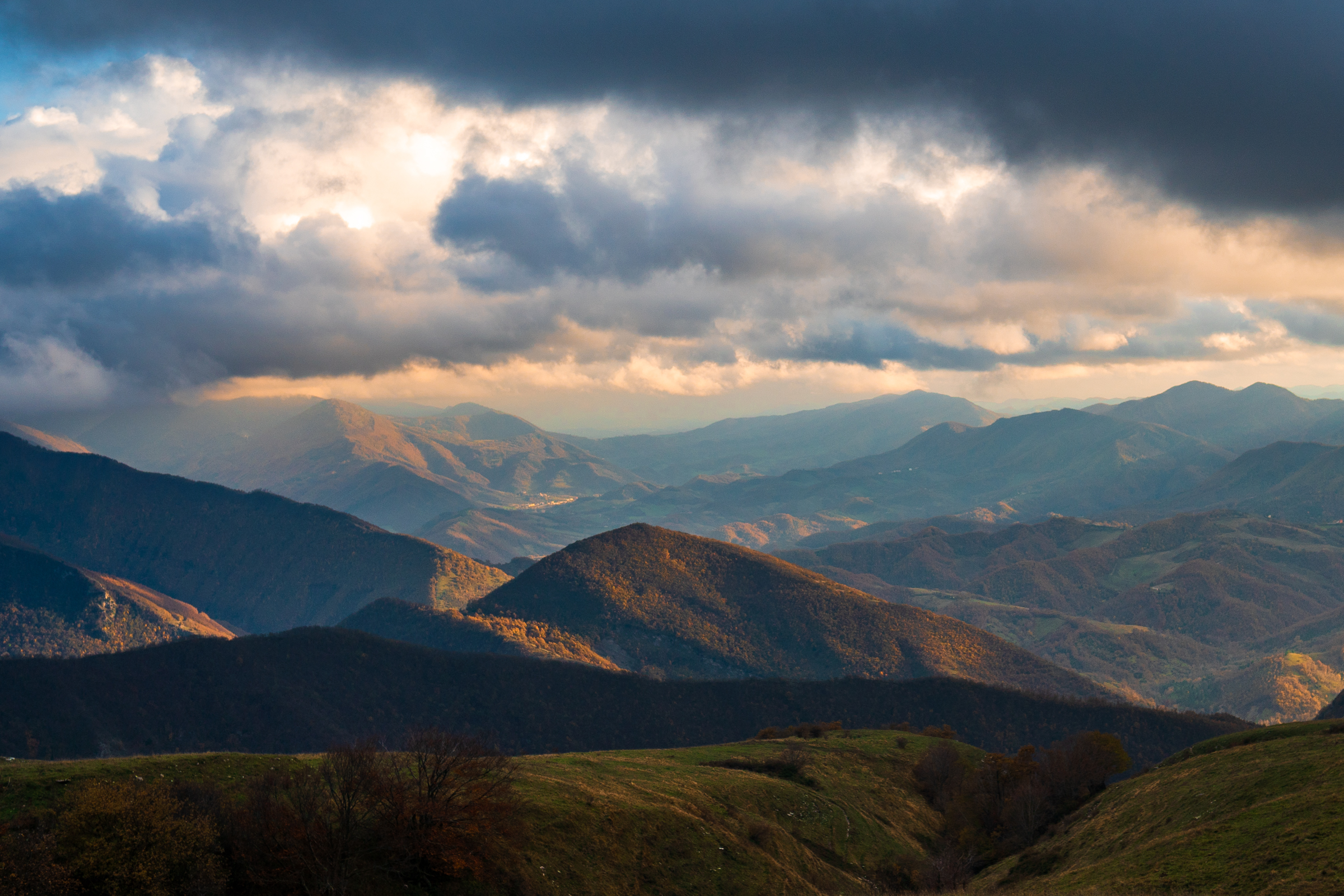
Monte Nerone
Food can be a tool to connect people, especially when there are cultural differences. On the second part of the expedition, Va’ Sentiero met the team of Fattoria Griot in Bojano on the foothills of Matese, Molise. Griot is a storyteller, praise singer, poet and musician from West Africa, and Fattoria Griot is the project that Fabrizio Russo started with immigrants who lived in his birth village. After studying Philosophy in Naples, Fabrizio came back and used food as a means of social convergence.
Fattoria Griot started to cultivate the abandoned terrain with biointensive agriculture, an innovative and beautiful way to respect nature. Immigrants in a limbo situation could begin to work and sell the vegetables on the local market. The local people, particularly the old ones, could approach African immigrants and accept them. The reality of immigrants in Italy is complex, so Fattoria Griot cannot work with the immigration program anymore. Still, Fabrizio finds a way to continue on his path of social change, by spreading a message of inclusion and renovation that the mountain area needs with an educational farm that became a meeting place for new people with its products.
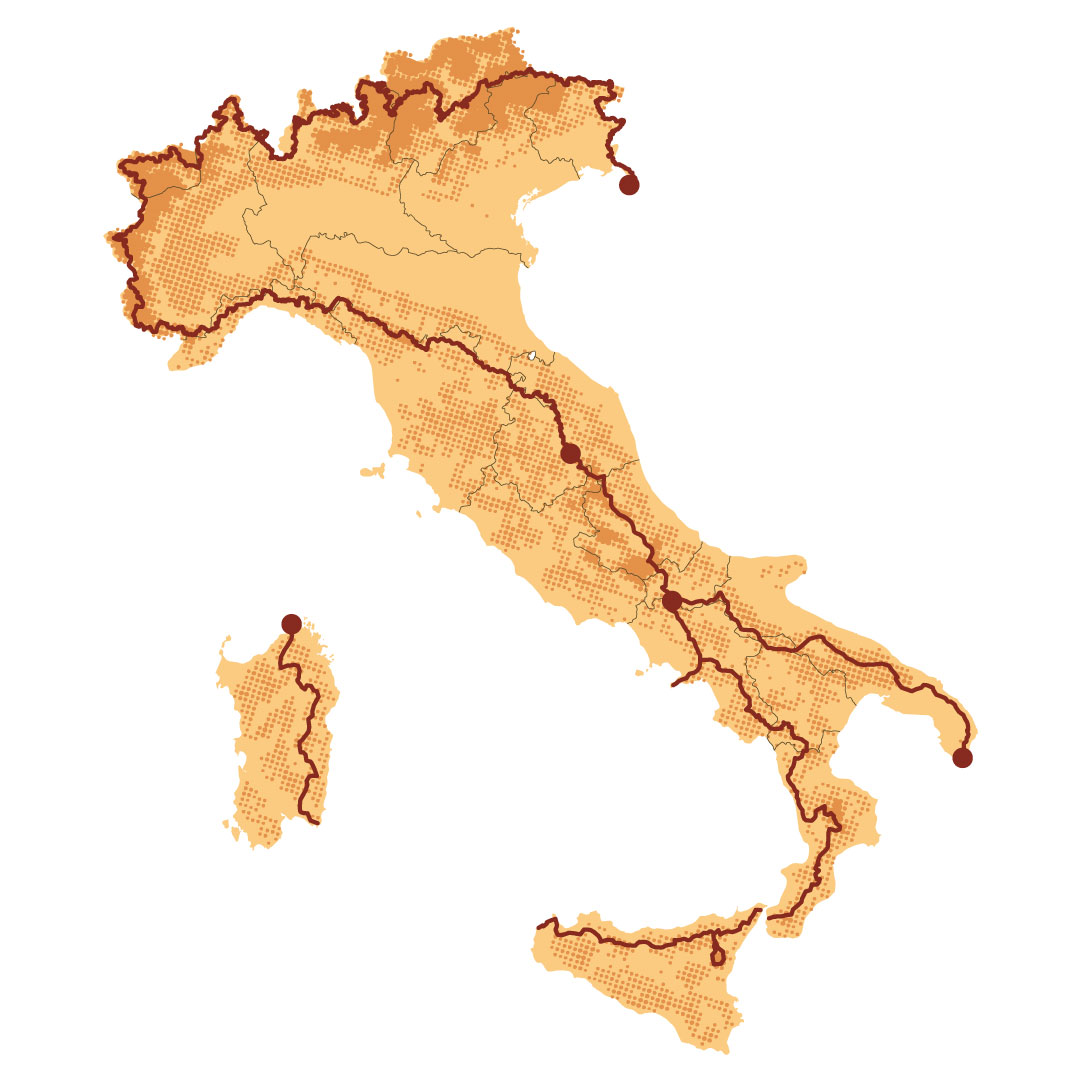
The Sentiero Italia Trail
During their journey, the team of Va’ Sentiero discovered plenty of examples of mountain re-population. All these little flames put together cast light on a huge reality: people started to pick up their lives, and they are building a new future for the Italian mountains. Food is a non-violent weapon to change what seemed an irreversible process. The mountains are taking back their important role in the future of Italy, where every valley has its tradition, every valley has its potential, every valley can be a personal paradise. All the world is welcome; just bring your story.
This article was created in collaboration with Francesco Sabatini – all pictures by Sara Furnaletto.